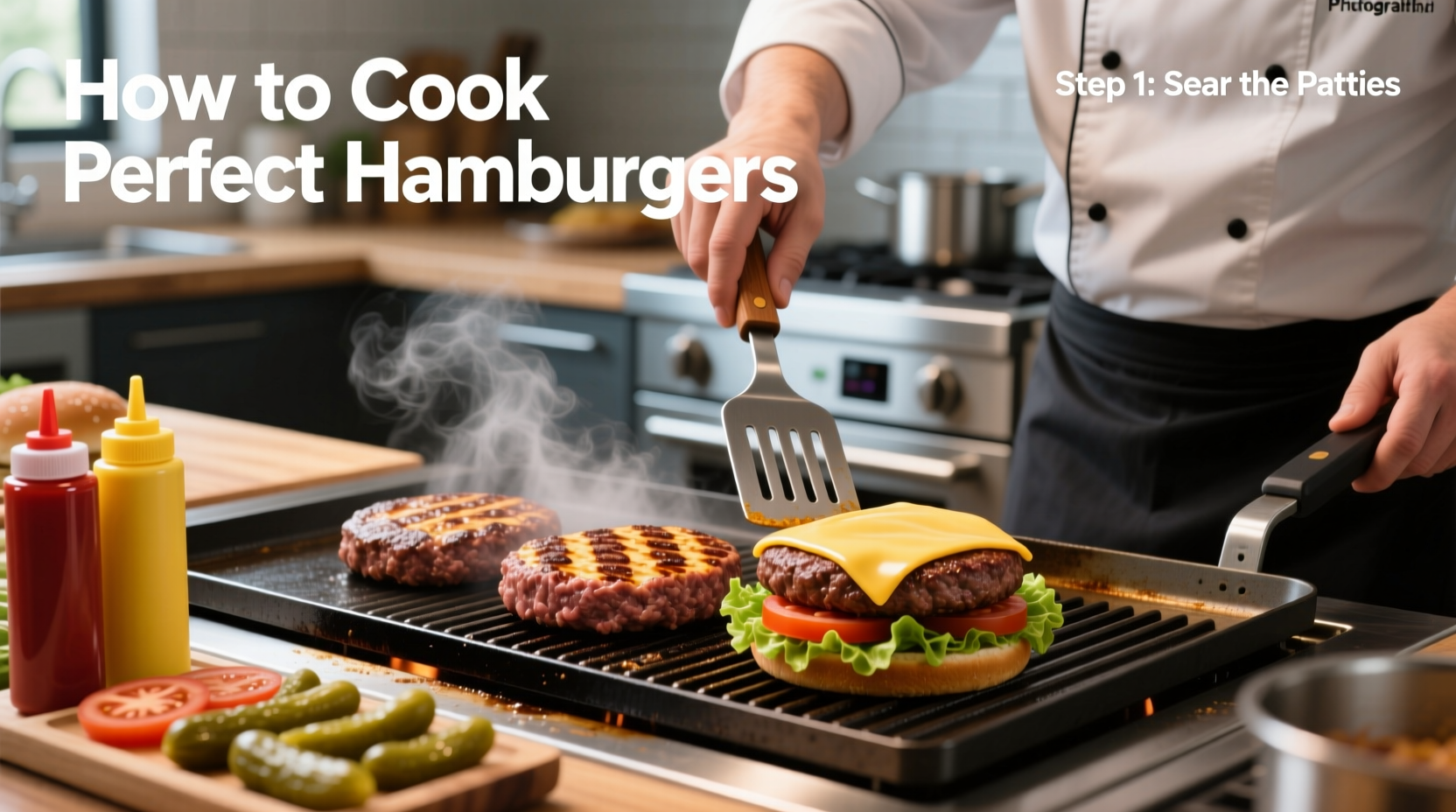Perfectly cooked hamburgers require selecting 80% lean ground beef, forming patties with a slight indentation, cooking for 3-4 minutes per side on medium-high heat, and reaching an internal temperature of 160°F (71°C) for food safety. Rest patties for 5 minutes before serving for juicier results.
The Ultimate Guide to Cooking Juicy, Flavorful Hamburgers at Home
There's nothing quite like a perfectly cooked hamburger—crisp on the outside, juicy on the inside, with that ideal balance of savory beef flavor and caramelized crust. Whether you're cooking on a backyard grill or in a cast-iron skillet, mastering hamburger technique transforms an ordinary meal into something extraordinary. This comprehensive guide delivers professional cooking methods that guarantee restaurant-quality results every time.
Why Most Homemade Burgers Fall Short (And How to Fix It)
Many home cooks struggle with dry, crumbly, or unevenly cooked burgers. The culprits? Using overly lean meat, over-handling the patties, incorrect cooking temperatures, and skipping the crucial resting period. Professional chefs know that hamburger success depends on understanding meat science, proper technique, and precise timing—not expensive equipment.
Essential Ingredients for Superior Hamburgers
The foundation of a great hamburger starts with quality ingredients. Don't compromise here:
- Ground beef: Choose 80% lean, 20% fat ground chuck. USDA recommends this ratio for optimal flavor and moisture retention in cooked hamburgers. Higher fat content creates juicier burgers while providing enough structure to hold together.
- Salt: Kosher salt (about ¾ teaspoon per pound of meat) enhances flavor without making patties too wet.
- Pepper: Freshly cracked black pepper adds complexity.
- Buns: Brioche or potato buns hold up best against juicy patties without becoming soggy.
Avoid adding binders like eggs or breadcrumbs to your ground beef—they're unnecessary and can make burgers dense. As the USDA Food Safety and Inspection Service confirms, quality ground beef with proper fat content holds together naturally when handled correctly.
Equipment You Actually Need
Forget complicated gadgets—these three items make the biggest difference:
- Cast-iron skillet or heavy grill grate (for consistent heat distribution)
- Instant-read thermometer (critical for perfect doneness)
- Lightweight spatula with a thin edge (for clean flipping)
Step-by-Step Perfect Hamburger Technique
1. Forming Patties Like a Pro
Gently shape 6-ounce portions of meat into balls, then flatten to ¾-inch thickness. Create a shallow dimple in the center of each patty—this prevents the burger from swelling into a ball during cooking. Handle the meat minimally; overworking develops proteins that make burgers tough.

2. Temperature Control Is Everything
Preheat your cooking surface to medium-high (around 375°F/190°C). The American Culinary Federation emphasizes that proper preheating creates the Maillard reaction needed for that essential sear. Too cool and you'll steam the meat; too hot and the exterior burns before the interior cooks.
| Cooking Method | Preheat Time | Optimal Temperature |
|---|---|---|
| Cast-iron skillet | 5 minutes | 375°F (190°C) |
| Gas grill | 10-12 minutes | Medium-high (375-400°F) |
| Charcoal grill | 25-30 minutes | Medium heat (coals ashed over) |
3. The Critical Cooking Process
Place patties on the hot surface and resist the urge to press down—this squeezes out precious juices. Cook undisturbed for 3-4 minutes until a deep brown crust forms. Flip once using a thin spatula, pressing gently to release any sticking. Cook another 3-4 minutes for medium doneness.
For cheeseburgers, add cheese during the last minute of cooking and cover briefly to melt. The FDA Food Code specifies that ground beef must reach 160°F (71°C) for food safety, which typically corresponds to medium doneness.
4. The Non-Negotiable Resting Period
Transfer cooked burgers to a wire rack and rest for 5 minutes. This allows juices to redistribute throughout the patty. Skipping this step causes juices to pour out when you cut into the burger, resulting in dry meat.
Avoid These 5 Common Hamburger Mistakes
- Using lean meat: 90% lean or leaner produces dry burgers. Stick with 80/20 for optimal results.
- Over-handling patties: Excessive shaping compacts meat, creating dense burgers.
- Flipping too often: One flip creates the best crust development.
- Pressing with spatula: Squeezes out flavorful juices you worked hard to retain.
- Slicing immediately: Resting is essential for juicy results—don't skip it.
Hamburger Variations Worth Trying
Once you've mastered the basic technique, experiment with these professional variations:
- Restaurant-style smash burgers: Press small meat portions onto hot surface for maximum crust.
- Herb-infused patties: Gently fold in fresh thyme or rosemary just before shaping.
- Umami boost: Mix in 1 tablespoon of Worcestershire sauce per pound of meat.
- Blue cheese stuffed: Create a pocket in the center and fill with crumbled blue cheese.
Storage and Reheating Guidelines
Leftover cooked burgers should be refrigerated within two hours. Store in airtight containers for up to three days. When reheating, the Journal of Food Protection recommends using an oven or toaster oven at 350°F (175°C) rather than a microwave to preserve texture. Place burgers on a wire rack over a baking sheet to prevent sogginess.
Mastering Hamburger Cooking: Key Takeaways
Crafting perfect hamburgers combines understanding meat science with precise technique. Start with quality 80/20 ground chuck, handle minimally, cook at proper temperatures without pressing, and always allow resting time. These evidence-based methods transform simple ingredients into extraordinary meals that satisfy even the most discerning palates. The difference between an average burger and an exceptional one lies in these details—details that professional chefs rely on daily.











 浙公网安备
33010002000092号
浙公网安备
33010002000092号 浙B2-20120091-4
浙B2-20120091-4